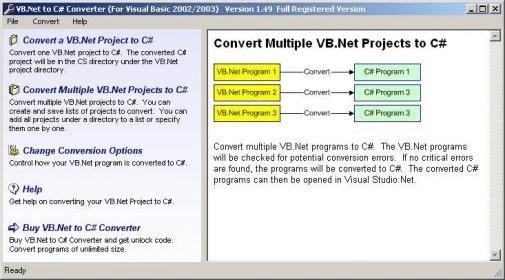

Added with that, the syntax of VB.Net is the closest to the one of VBA. select "Export to a file." (see the opposite figure ).ģ From Excel, open the VBA2DotNet workbook, make the appropriate set-up (see chapter 3.1) and run the application.From the Excel VBA editor, do a right-click on each object containing VBA code.Therefore it is natural to prefer conversion of VBA into VB.Net.Ģ Migration from Excel-VBA into Interop-VB.Netġ Create one input folder that will contain the objects that you will export from your application and one output folder that will contain converted objects.Ģ Export all modules, class modules and userforms from your VBA project into the input folder.

It can last a few minutes, depending on the size of the files to process.Ĥ If the Excel workbook of your original application contains 1 or more worksheets that will still be required to the migrated one, create a new workbook embedding only these sheets.ĥ In your. Net development framework, create a new solution, import the objects contained in the output folder of VBA2DotNet.Ħ Correct compilation errors, complete and adapt the code (In particular, add the instructions to open the new workbook without VBA code).ġ You can duplicate this sheet in the same workbook as many times as you have different VBA projects to process.Ģ Fill in the name of the sheet that contains reserved words. If present, the sheet must exist in the same workbook.ģ Fill in the name of the sheet that contains the convertion rules to apply.Ĥ Fill in the name of the sheet that will show the code and the detected types of variables (65530 maximum lines ).


 0 kommentar(er)
0 kommentar(er)
